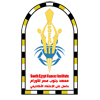Simple Summary: Multimodal treatment of nasopharyngeal carcinoma (NPC) in children and
young adults with induction chemotherapy, followed by radiochemotherapy and interferon-β (IFN-
β) maintenance, has been successfully applied in studies NPC-91 and NPC-2003 of the German Society
of Pediatric Oncology and Hematology (GPOH). We, here, present updated survival rates of
the NPC-2003 study cohort after longer follow-up and include 21 additional patients recruited after
closure of the study and treated as per the NPC-2003 study protocol (interim cohort) in our survival
analysis. Survival rates remain high after extended follow-up and in the larger cohort with EFS and
OS of 94% and 97%, respectively, reinforcing the high antitumor efficacy of this multimodal treatment
concept. Seven patients with CR after induction therapy received a reduced radiation dose of
54 Gy, and none of them relapsed. Thus, the reduction of radiation dose seems feasible and has the
potential to reduce treatment-related late effects in this vulnerable population.
Abstract: Nasopharyngeal carcinoma (NPC) in children and young adults has been treated within
two consecutive prospective trials in Germany, the NPC-91 and the NPC-2003 study of the German
Society of Pediatric Oncology and Hematology (GPOH). In these studies, multimodal treatment
with induction chemotherapy, followed by radio (chemo)therapy and interferon-beta maintenance,
yielded promising survival rates even after adapting total radiation doses to tumor response. The
outcome of 45 patients in the NPC-2003 study was reassessed after a median follow-up of 85 months.
In addition, we analyzed 21 further patients after closure of the NPC-2003 study, recruited between
2011 and 2017, and treated as per the NPC-2003 study protocol. The EFS and OS of 66 patients with
locoregionally advanced NPC were 93.6% and 96.7%, respectively, after a median follow-up of 73
months. Seven patients with CR after induction therapy received a reduced radiation dose of 54 Gy;
none relapsed. In young patients with advanced locoregional NPC, excellent long-term survival
rates can be achieved by multimodal treatment, including interferon-beta. Radiation doses may be
reduced in patients with complete remission after induction chemotherapy and may limit radiogenic
late effects.
المشارك في البحث
قسم البحث
تاريخ البحث
سنة البحث
2022
مجلة البحث
Cancers
الناشر
MDPI
صفحات البحث
1-18
ملخص البحث

